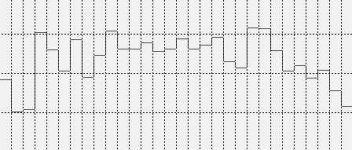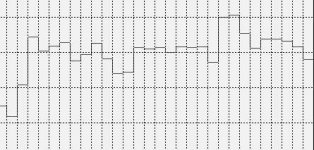At risk of being pedantic, efficiency and max power transfer, whilst related are different variables to play with in toobland. But you could change your first sentence from 'for max power' to 'with tubes' and the rest would still hold true 🙂
The F2/J2 has nary a tube in sight. Neither did either of the variable transamps that can be found around here… seems each speaker we tried it on prefered a different output impedance setting.
dave
The F2/J2 has nary a tube in sight. Neither did either of the variable transamps that can be found around here… seems each speaker we tried it on prefered a different output impedance setting.
dave
May I point you to post #357 where you started this particular direction . Can I assume you are bored of Western electric or did I miss a change of tack somewhere?
The max power theorem says that for a source of given output impedance, Zs, the max power is delivered to the load when the load impedance, Zl, is equal to the complex conjugate of the source impedance, Z*. However, the theorem does not wok in reverse. That is, given the load impedance, Z*, max power from the source does not occur when the source impedance is Z. In fact, for a given load max power is transferred to the load is when the source impedance is zero.
Can I assume you are bored of Western electric or did I miss a change of tack somewhere?
I think we can assume you have lost the thread. The 1st was for Jan to illustrate that he needed to reconsider his history, and the 2nd was to provide some modern examples.
dave
I think we can assume you have just lost it. The 1st was for Jan to illustrate that he needed to reconsider his history, and the 2nd was to provide some modern examples.
dave
That or you don't like to answer straight questions. Either are equally likely.
The max power theorem says that for a source of given output impedance, Zs, the max power is delivered to the load when the load impedance, Zl, is equal to the complex conjugate of the source impedance, Z*. However, the theorem does not wok in reverse. That is, given the load impedance, Z*, max power from the source does not occur when the source impedance is Z. In fact, for a given load max power is transferred to the load is when the source impedance is zero.
Agreed. If you can make the source impedance zero and frequencies are low enough that you don't have to worry about the pesky signal bouncing off the end and coming straight back atcha.
BUT back to Dave's quote from WE
which I still haven't got to the bottom of. IF you have a finite output Z (tube amp+transformer) you have to chose a nominal Zout. what is the best Zout to chose?"why would anyone make an amp where the output impedance isn't the same as the speaker it is driving"
The max power theorem says that for a source of given output impedance, Zs, the max power is delivered to the load when the load impedance, Zl, is equal to the complex conjugate of the source impedance, Z*. However, the theorem does not wok in reverse. That is, given the load impedance, Z*, max power from the source does not occur when the source impedance is Z. In fact, for a given load max power is transferred to the load is when the source impedance is zero.
And so? It's not the fully story.
As I said before find me a load (i.e. speaker) designed for a low Zout amp that is at least 1% efficient and compact at the same time without compromising on frequency response and other relevant parameters.
You can have voltage without current, which is why it is called "potential" energy. But you can not have current without voltage.
Missed this. A misconception. You can have voltage without current if you supply an infinite load. You can have current without voltage if you supply a zero load.
Mirror images. Again. 🙂
Jan
You can have voltage without current if you supply an infinite load.
I thought I said that. The best example is probably a battery with nothing connected.
You can have current without voltage if you supply a zero load.
Huh? You mean like a piece of wire? Would you mind showing me how you might calculate that current flow with no voltage driving it?
Thanks,
Chris
Last edited:
...
BUT back to Dave's quote from WE which I still haven't got to the bottom of. IF you have a finite output Z (tube amp+transformer) you have to chose a nominal Zout. what is the best Zout to chose?
Mcintosh seem to be happy with about 0.5 ohms on their tube amps.
Huh? You mean like a piece of wire? Would you mind showing me how you might calculate that current flow with no voltage driving it?
Thanks,
Chris
Actually it is possible but not unless you want to enter the realm of superconductors and quantum mechanics. I don't think we really want to go there. If you are interested look up the Josephson effect or Josephson Junctions. Not going to happen in a wire though. 🙂
Actually it is possible but not unless you want to enter the realm of superconductors and quantum mechanics. I don't think we really want to go there. If you are interested look up the Josephson effect or Josephson Junctions. Not going to happen in a wire though. 🙂
I'm with you. I know nothing about superconductors beyond what we are trying to achieve with them. And I think the best examples right now have to be really, really, really cold.
Even with a super conductor, is it really flow in a specific direction, as in a normal electronic circuit? Or is it more electrons jumping around with no particular overall direction?
I guess I should probably just look up Josephson effect or Josephson Junctions, like you said.
-Chris
Holy crap, John K. I hadn't clicked the link in your sig before now and had no idea I was learning stuff from the SoundEasy Design Guide author in this thread.
I just bought SoundEasy a few weeks ago and need to get back into it. So far I can use it enough to no longer need WinISD but haven't even opened it for two weeks.
-Chris
I just bought SoundEasy a few weeks ago and need to get back into it. So far I can use it enough to no longer need WinISD but haven't even opened it for two weeks.
-Chris
There is the quandary of putting an absolute value to ∞ /(1/∞) of course. A real battery has a high R but finite leakage path. Superconductors theoretically have a virtually infinite persistence of current flow, not to say how it got moving in the first place. Maybe it's like drifting through space?
BUT back to Dave's quote from WE which I still haven't got to the bottom of. IF you have a finite output Z (tube amp+transformer) you have to chose a nominal Zout. what is the best Zout to chose?
You'd have to ask the guy i talked to… but he passed shortly after i talked to him 15 some years ago. The point of that was that WE, that was a giant in audio pre WWII was not doing voltage amps.
dave
You'd have to ask the guy i talked to… but he passed shortly after i talked to him 15 some years ago. The point of that was that WE, that was a giant in audio pre WWII was not doing voltage amps.
dave
The whole point of current drive is that it is possible to achieve better results respect to voltage driving because one can use also impedance variations to model total response; complexity increases, but performances too. This is done best if no cross-over is present, IMHO. However the presence of a cross-over does not preclude such thing.
It is the only kind of drive that can make a single 8" driver with a whizzer cone to perform like a good multiway speaker in terms of frequency response while being on another level, well ahead, in terms of time domain behaviour.
It is the only kind of drive that can make a single 8" driver with a whizzer cone to perform like a good multiway speaker in terms of frequency response while being on another level, well ahead, in terms of time domain behaviour.
You sure about that? I don't see it from the information presented (particularly the excellent paper Nelson Pass did ).
You sure about that? I don't see it from the information presented (particularly the excellent paper Nelson Pass did ).
Which paper? The one where he adds a network to a voltage amp to emulate a current amp?
The easiest way to see the effect of a current amp on the frequency response of a driver is a guitar amp: pentode amp with no feedback driving a 12" cone. Add lots of fb and you miss the trebles completely.
The attachments show an CHEAP 8" driver with whizzer cone when voltage driven (left) and current driven (right). Can you see the difference?
Attachments
Last edited:
- Status
- Not open for further replies.
- Home
- Loudspeakers
- Multi-Way
- Joe Rasmussen Usher S520 "Current Compatible" Crossover

